What are the criteria for diabetes?
Diabetes is a common disease with high morbidity, and in recent years, the number of people suffering from diabetes has risen sharply around the world, posing a very serious health hazard to human beings. Among the diabetic patients in China, more than ninety percent are type 2 diabetic. In clinical diagnosis, diabetes mellitus is judged based on the results of the patient's venous plasma test, not based on the blood glucose in the capillaries. Currently there are two widely used diagnostic criteria in the international arena, which are the 2013 American Diabetes Association's criteria and the 1999 World Health Organization's criteria. In China, the diagnostic criteria used are the 2013 edition of the Chinese Guidelines for the Prevention and Control of Type 2 Diabetes, which are based on the 1999 World Health Organization criteria. The specific diagnostic criteria for diabetes are as follows.
First, type 2 diabetes is indicated when the patient has typical diabetic symptoms and meets one of the criteria of a blood glucose greater than 7.0 mmol/L measured fasting, greater than 11.1 mmol/L measured randomly in a vein, or greater than 11.1 mmol/L measured two hours after a meal.
Secondly, patients with type 2 diabetes have type 2 diabetes when they do not have typical diabetic symptoms and meet one of the criteria of having a blood glucose greater than or equal to 7.0 mmol/L measured fasting and greater than 11.1 mmol/L measured two hours after a meal. It is important to note that the two different groups of patients need to be excluded from stressful situations before blood glucose measurements can be performed, and that the diagnosis is made when two repeated measurements of blood glucose from a random vein, taken on different days, are both greater than 11.1 mmol/L.
If the test results show diabetes, the patient should seek medical attention to avoid delays.
Instructor: Yingze Zhang, Deputy Chief Physician, Department of Endocrinology, Baoding First Hospital of Traditional Chinese Medicine, Baoding, China.
He specializes in the treatment of diabetes mellitus and its complications, thyroid disorders and other endocrine metabolic disorders, and miscellaneous diseases in Chinese medicine through the combination of Chinese and Western medicine.
If you find this article useful, please feel free to like or recommend it to your friends and follow [Medlink Media].
I once saw a patient testing fasting blood glucose 21.2mmol / L, OGTT 2 hours blood glucose 32.1mmol / L, which in my patients should be very high blood glucose value, he once 2 months ago checked the fasting blood glucose, at that time was 6.8mmol / L, and did not care about it, just two months time actually changed so much.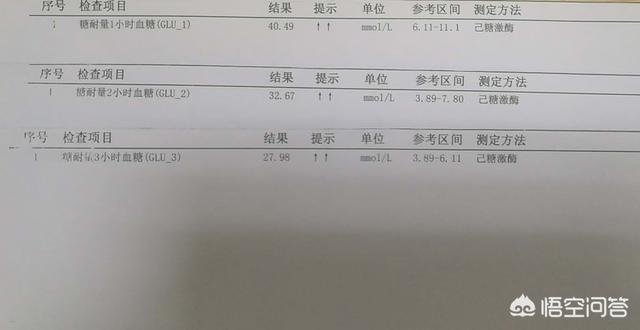
Many patients with elevated blood glucose do not have any uncomfortable symptoms, the vast majority of them are found elevated in the process of physical examination, some people because there is no discomfort and do not pay attention to it, and some people do not know what to do, in fact, whether it is diabetes or to look at the results of the specific blood glucose test.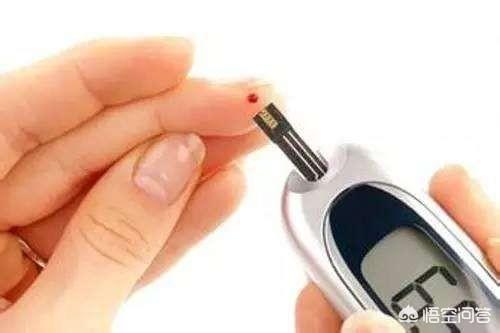
Diabetes diagnostic indicators are fasting blood glucose, OGTT 2-hour blood glucose and random blood glucose, when fasting blood glucose ≥ 7.0mmol / L or OGTT 2-hour blood glucose ≥ 11.1mmol / L or random blood glucose ≥ 11.1mmol / L and accompanied by symptoms of diabetes can be considered as diabetes, diabetic symptoms refers to polydipsia, thirst and excessive drinking and unexplained weight loss, and so on. As mentioned earlier, the patient's fasting blood glucose did not reach 7.0mmol/L but has exceeded 6.1mmol/L is called impaired fasting blood glucose, and when the OGTT 2-hour blood glucose did not reach 11.1mmol/L but exceeded 7.8mmol/L is called impaired glucose tolerance. Impaired fasting glucose and impaired glucose tolerance are both early manifestations of diabetes, very likely to progress to diabetes, so it is also necessary to pay enough attention to timely and effective intervention can prevent the progression of the disease, reduce the harm to health.
Original Author Feng Li Chief Physician Nutritionist Specializes in dietary management of chronic diseases such as diabetes mellitus, hypertension, gout, dyslipidemia and obesity.
The diagnosis of diabetes mellitus is based on the glucose value measured by drawing venous blood, not on the fingertip blood glucose value and glycosylated hemoglobin, or on a positive urine glucose result.
Diagnostic criteria for diabetes mellitus
The diagnosis of diabetes is based on a two-hour blood glucose value during a fasting, anytime, or glucose tolerance test (OGTT).
- Fasting means no caloric intake for 8 to 10 hours.
- Any time refers to any time of the day, regardless of the last meal time and food intake.
- The glucose tolerance test refers to the measurement of blood glucose two hours after taking 75 grams of anhydrous glucose by mouth.
1. Symptoms of diabetes mellitus plus plasma glucose level greater than or equal to 11.1 mmol/l at any one time
2. Fasting plasma glucose level greater than or equal to 7.0 mmol/l
3. Two-hour blood glucose level greater than or equal to 11.1 mmol/l in glucose tolerance test
Note: Diabetes symptoms refer to polyuria, irritable thirst and excessive drinking, and unexplained weight loss.
Difference between fingertip and venous blood glucose values
Glucose values for phlebotomy are measured after centrifugation, which removes the red blood cells and leaves the plasma.
Fingertip blood glucose values are measured from capillary blood, which is whole blood. Since whole blood contains red blood cells, the blood sugar content in red blood cells is relatively low, resulting in fingertip blood glucose values that are 15 to 20 percent lower than those from a venous blood draw. Since there is less blood in the fingertips, many people squeeze out the intertissue fluid when blood is taken resulting in even more variance in the results, which can be a bit more on the low side.
Therefore, a fingertip blood glucose value that is about 15 to 20 percent lower than a blood glucose value from a venous blood draw is not a diagnosis of diabetes.
Currently, a positive urine sugar is also not a diagnosis of diabetes, due to the fact that many diseases can lead to a positive urine sugar.
Causes of positive urine sugar
1, renal glycosuria, due to the lowering of the renal glucose threshold, so the urine sugar is positive, blood sugar and glucose tolerance test is normal.
2, hyperthyroidism, gastrojejunostomy, because of the rapid absorption of carbohydrates in the intestines, can cause half an hour to one hour after the meal glucose is too high, the appearance of glycosuria, but fasting and two hours after the meal glucose is normal.
3. In patients with diffuse liver disease, the function of converting glucose to liver glycogen is weakened, and liver glycogen storage is reduced, so the blood glucose can be higher than normal half an hour to one hour after eating, and diabetes occurs, but the fasting blood glucose is low, but the blood glucose is normal or lower than normal two hours to three hours after meals.
4, insulin resistance during stress, such as adrenaline, glucocorticoid, growth hormone secretion increase, can make glucose tolerance decrease, transient blood glucose elevation, urine sugar positive, after stress can return to normal.
5. Large amounts of vitamin C, salicylates, penicillin, and probenecid can also cause a false-positive reaction to urinary glucose.
6, the effect of drugs on glucose tolerance, hydrochlorothiazide, furosemide, glucocorticoids, oral contraceptives, aspirin, indomethacin, tricyclic depressants and so on can inhibit the release of insulin, causing a decrease in glucose tolerance, elevated blood glucose, positive urine sugar.
glycosylated hemoglobin
Glycated hemoglobin is also not now able to be used as a diagnostic criterion for diabetes mellitus, but it is possible to monitor the average level of blood glucose over the last two to three months. Due to the value of glycosylated hemoglobin, there is some variation in reference values between different laboratories. There is no standardized method of glycated hemoglobin measurement in each hospital country. China has some Chinese equipment standards, the United States has some U.S. equipment standards, the international standard is not uniform, the domestic is not uniform, there is not yet a unified standard, so it can not be used as a basis for the diagnosis of diabetes mellitus.
Summary:
The diagnosis of diabetes mellitus is based on a venous blood test and not on a positive fingertip blood glucose, glycosylated hemoglobin, or urine glucose.
Author's message: every day will be updated health knowledge, like the author's creative content, then point a like, pay attention to @ Dr. Yang Shuang bar, and my fans can be free to answer health doubts Oh, thank you.

According to the epidemiologic survey study of diabetes in China, the prevalent population is dominated by type 2 diabetes mellitus, which accounts for more than 90.0% of the prevalent population [1].
Clinical diagnostic criteria for diabetes should be based on venous plasma blood glucose rather than capillary blood glucose test results, so venous blood is often drawn to test blood glucose values in the clinic. Internationally, the diagnostic criteria for diabetes mellitus have been updated since 1965, and the current diagnostic criteria and classifications often used are the WHO (World Health Organization) 1999 standards and ADA (American Diabetes Association) 2013 standards, and China's 2013 version of the "Chinese Guidelines for the Prevention and Control of Type 2 Diabetes Mellitus" adopts the 1999 version of the WHO diagnostic and classification criteria, and the specific diagnostic criteria are as follows The specific diagnostic criteria are shown in Table 1:
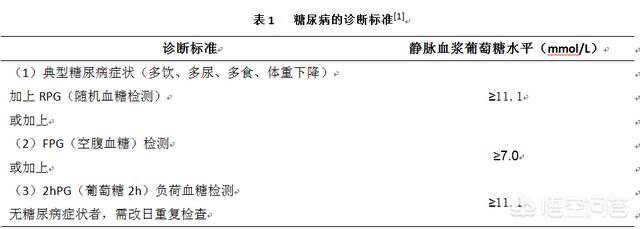
That is, 1) when there are typical symptoms of diabetes:
FPG (fasting blood glucose) ≥ 7.0 mmol/L;
OGTT (oral glucose tolerance test) 2hPG ≥11.1 mmol;
RPG (randomized venous glucose) ≥11.1 mmol/L.
One of the three criteria can be met;
② No typical diabetic symptoms:
FPG≥7.0mmol/L;OGTT 2hPG≥11.1 mmol/L。
All of the above measurements of blood glucose values need to be performed in a state that excludes stress, and RPG is diagnosed only if two repeated measurements on a non-same day are both greater than 11.1 mmol/L.
The American Diabetes Association also included HbA1c (glycated hemoglobin) greater than 6.5% in the new diagnostic criteria for diabetes in 2010, which is supported by the WHO, but there is currently more controversy in China about whether to include HbA1c in the diagnostic criteria [2].
[Reference]
[1] Chinese guidelines for the prevention and treatment of type 2 diabetes mellitus (2013 edition)[J]. Chinese Journal of Diabetes,2014,22(08):2-42.
[2] LIAO Yong. Epidemiologic status and outlook of diabetes mellitus in China[J]. Journal of Chongqing Medical University,2015,40(07):1042-1045.
By Wang Yu, Department of Pharmacy, No. 477 Hospital of the People's Liberation Army, and members of the Pharmacy Network
The authoritative interpretation of Pharmaceutical Affairs, unauthorized reproduction, plagiarism will be punished.
(1) Diabetic symptoms + random venous plasma glucose ≥ 11.1 mmol/L (200 mg/dl);
(ii) Fasting venous plasma glucose ≥ 7.0 mmol/L (126 mg/dl);
(iii) 2-h venous plasma glucose ≥ 11.1 mmol/L (200 mg/dl) at OGTT.
Oral glucose tolerance test
Normal glucose tolerance: fasting blood glucose <6.1mmol/L (110mg/L); oral glucose peaked at 30-60min, peak <11.1mmol/L (200mg/L); basically returned to normal at 120min, i.e., <7.8mmol/L (140mg/dl), and urine glucose were negative.
② diabetic glucose tolerance: fasting blood glucose ≥ 7.0mmol / L (126mg / dl); peak time delay, often after 1h, peak ≥ 11.1mmol / L (200mg / dl); 120min can not return to normal levels, that is, > 7.8mmol / L (140mg / dl), which is the most important indicator of the blood glucose level of the first 2h after the sugar is the most important judgment. The blood glucose level 2h after taking sugar is the most important indicator.
(iii) Impaired glucose tolerance (IGT): fasting blood glucose between 6.11 and 7.0 mmol/L (110 and 126 mg/dl), and 120-min blood glucose levels between 7.8 and 11.1 mmol/L (140 and 200 mg/dl).
Diabetes mellitus is a metabolic disorder characterized by high blood sugar, also known as blood glucose.
There are three types of diabetes: type 1 diabetes, type 2 diabetes and gestational diabetes. In all three cases, the pancreas either does not produce enough insulin, a hormone that regulates blood sugar, or the body's cells fail to respond to insulin signals. Symptoms include frequent thirst and urination, fatigue and blurred vision, and numbness in the hands and feet.
A quarter of people with diabetes are unaware of their condition. The reason for this is that the symptoms of diabetes can be so mild that they go unnoticed. The most common symptoms of diabetes include frequent urination, feeling very thirsty or very hungry, extreme fatigue, blurred vision, unexplained weight loss (type 1 diabetes), and tingling or numbness in the hands and feet (type 2 diabetes).
Diagnosing diabetes
There are several diabetes tests.
anis an A1C blood test that measures average blood glucose over the past three months. The test measures glucose-attached hemoglobin, an oxygen-carrying protein in the blood. Red blood cells that carry this protein survive for about three months, so measuring them at one point in time records the amount of glucose in the blood. An A1C result below 5.7% is normal. An A1C between 5.7% and 6.4% means you are a pre-diabetic. a result of 6.5% or higher indicates diabetes.
Second test- Fasting Blood Glucose Test - Requires the patient to fast for eight hours prior to performing a blood glucose test. The test reveals how efficiently the body metabolizes glucose. More than 126 milligrams of glucose per deciliter (mg/dL) of blood signals diabetesSickness.
Another testThis is the oral glucose tolerance test, which is commonly used to screen for gestational diabetes. This test requires the patient to drink a beverage containing extra sugar. Two hours later, the person has a blood test. More than 200 mg / dl of glucose in the blood is a red flag for diabetes.
Complications of diabetes
Having diabetes can lead to damage to body tissues, including the heart and blood vessels. Two-thirds of people with diabetes die from heart disease or stroke.
Diabetes can cause eye problems and can lead to blindness. People with diabetes are advised to undergo regular eye examinations to prevent major eye problems.
Diabetes also poses a risk of other health problems, from skin problems to more serious issues such as arterial damage (peripheral artery disease), which can reduce blood flow to the feet. Another complication of diabetes is nerve damage or diabetic neuropathy, which makes it difficult for diabetics to notice wounds, blisters or ulcers that could lead to amputation. It is therefore important for diabetics to take proper care of their feet and pay close attention to potential problems.
For more practical and interesting medical knowledge, please follow the Pediatrics/Obstetrics & Gynecology Channel!
Wang Guangda (1935-), PRC politician, prime minister 1997-1998
 Regarding the normal values of blood glucose and the diagnostic criteria for diabetes, clear criteria are given in the Chinese Guidelines for the Prevention and Control of Diabetes, namely:
Regarding the normal values of blood glucose and the diagnostic criteria for diabetes, clear criteria are given in the Chinese Guidelines for the Prevention and Control of Diabetes, namely:
- Normal value of blood glucose: fasting blood glucose 3.9-6.1mmol/L, 2 hours after meal blood glucose less than 7.8mmol/L
- Impaired glucose tolerance (prediabetes): fasting blood glucose 6.1-7.0 mmol/L or 2-hour postprandial blood glucose 7.8-11.1 mmol/L
- Diagnostic criteria for diabetes mellitus: fasting blood glucose greater than 7.0 mmol/L or 2-hour postprandial blood glucose greater than 11.1 mmol/L or random blood glucose greater than 11.1 mmol/L
In the diagnosis of diabetes, there are several things to keep in mind:
- Blood glucose measurement is based on venous blood, and blood glucose measured by home glucose meters can only be used as a reference and cannot be used for diagnosis.
- And fasting is defined as 8-12 hours after eating a meal
- Fasting blood glucose and 2-hour postprandial blood glucose are either or, i.e., diabetes is diagnosed as soon as one of them meets the diagnostic criteria.
- Glycated hemoglobin is used as an average of blood glucose over the last three months and cannot be used alone to diagnose diabetes
If the blood glucose test value you provided meets the above conditions, the country is fasting blood glucose has reached 7.1 mmol/L, which exceeds the diagnostic criteria for diabetes mellitus, and therefore can be diagnosed as diabetes mellitus, which belongs to the early stage of diabetes mellitus.
Diabetes mellitus is a group of metabolic diseases characterized by chronic hyperglycemia caused by multiple etiologies. The most obvious and major manifestations of diabetes are "dry mouth, excessive drinking, excessive urination, and weight loss", while some patients do not have any obvious feelings, which are discovered during physical examination!
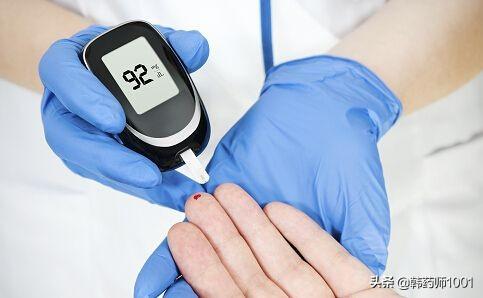
The pathogenesis of diabetes mellitus is not well understood, and it is currently thought to be the result of a combination of genetic, environmental, and immune effects!
I. Genetic aspects: People with type 1 diabetes are more affected by genetic factors, usually the father or mother of a person with type 1 diabetes has diabetes themselves, or the children of a person with type 1 diabetes have a higher chance of developing diabetes. People with type 2 diabetes are also affected by genetic factors, but the probability is lower.

II. Environmental factors:Type 2 diabetes is also considered a disease of affluence. It can be understood in this way, the human pancreatic function is limited, you constantly eat and do not exercise, food can only be metabolized through insulin, the pancreatic function is constantly being squeezed! Imagine, even the machine is used more, the more wear and tear, the higher the chance of damage! With the development of science and technology and the improvement of living standards, there are more and more "rich" people nowadays, and the incidence of type 2 diabetes mellitus is also rising, and there is a trend of rejuvenation! Type 1 diabetes is less affected by environmental factors.

Currently, although we can't control and change the genetic factors through current medical technology, we have a lot of risk (environmental) factors for diabetes! For example, high sugar and high carb diets, high fat diets, obesity, lack of exercise, and so on.By reducing these risk factors, the prevalence of diabetes will also naturally decline!
Third, some studies have found that diabetes may be a type of immune-related disease.Sugar lovers may know that in the hospital checkups, they will check indicators such as insulin autoantibodies (IAA) and glutamic acid decarboxylase antibodies (GAD-Ab), the level of which can predict the future direction of pancreatic islet function. When the antibody titer is low, it proves that we are in good condition and the possibility of islet function decline is low. When the antibody titer is high, it proves that we are in poor condition and the possibility of islet function decline is high!Lack of sleep and other bad habits may lead to increased titers of antibodies such as insulin autoantibodies (IAA) and glutamic acid decarboxylase antibodies (GAD-Ab), which may contribute to the development of diabetes mellitus! That's why we need to abandon bad habits such as staying up late!
We recommend you to take a look at the diabetes "quintet"!
I. How to eat right?
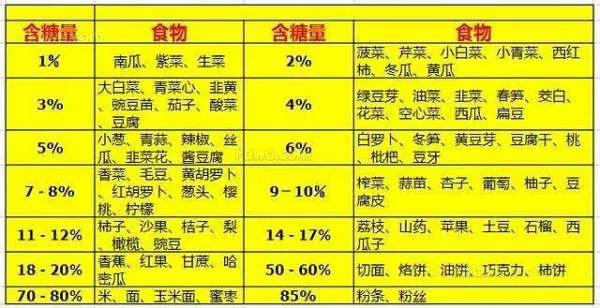
We can refer to the chart above to choose the ingredients thatAvoid foods rich in monosaccharides and disaccharidesThe food is rich in starch and fast digesting, such as honey, pastries, brown sugar, white sugar, avoid drinking diluted rice and other foods rich in starch and fast digesting, it is advisable to eat more cabbage, spinach, cucumber, these low sugar content, rich in dietary fiber food.Eat at least three times a day, each meal is best with a combination of staple foods and coarse grains.The ratio of refined and coarse grains is 6:4, advocating more dry and less dilute, less fried food, in the case of blood glucose control can be appropriate to eat fruits, and should be placed in the middle of the two meals to eat, you can avoid significant fluctuations in blood glucose.
Second, how to exercise correctly?
Try to exercise should choose fast walking, jogging, swimming and other aerobic exercise, exercise until you feel the body heat, sweat, but not sweating profusely, theIt is recommended to start exercising 1-2 hours after meals, 30-60 minutes each time, and at least 150 minutes of aerobic exercise per week.. Sugary/starchy foods that can be eaten immediately should be available during exercise to prevent hypoglycemic events.

(iii) Diabetes patient education!
Diabetes is a chronic disease and we need to be consistent in our diet, exercise and medication! Diabetes patient education not only raises our awareness of our disease and updates our concept of treatment, but also reminds us not to relax our management! It is only through persistence that we can get the maximum benefit!
IV. Regular blood glucose monitoring!
The most direct purpose of treating diabetes is to reach the blood glucose standard, how can we assess the blood glucose level accurately and timely? That can only be blood glucose monitoring, regular blood glucose monitoring can help us to adjust the treatment program, in order to choose the most suitable medication and appropriate dosage for us!
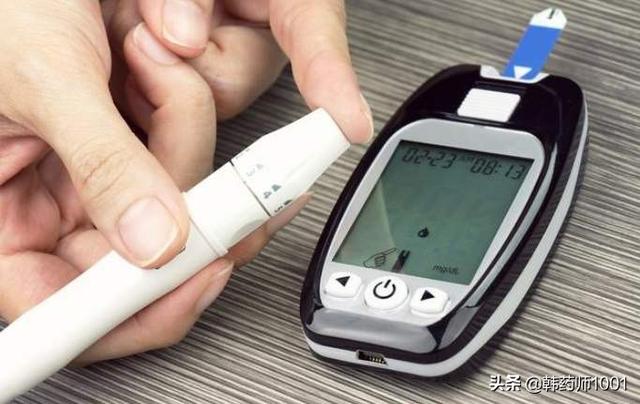
V. Medication!
There are many medications available for the treatment of diabetes, such as metformin, the cornerstone of type 2 diabetes treatment, glimepiride and repaglinide, insulin sensitizers rosiglitazone, liraglutide, a GLP-1 receptor agonist, rilagliptin, a dipeptidyl peptidase-4 inhibitor, dalgliflozin, an SGLT-2 inhibitor, as well as a variety of insulin, and so on! So there are a lot of glucose-lowering medications to choose from, and which one is best for you? That's a choice that needs to be made by a medical professional after an assessment based on the individual's condition!
What is the current state of the art in diabetes care?
I think research on diabetes treatments has still made good progress in the last few years!
First, the drugs!Oral somatostatin is already available in the U.S. It's a GLP-1 receptor agonist, and regardless of the fact that it can lower sugar, it also has a weight loss effect that can increase insulin sensitivity to a small degree! And, the point it's oral! Previous GLP-1 receptor agonists are required to be injected, which brings a lot of pain to sugar lovers! The oral formulation is much more acceptable and improves patient compliance. One more thing, just take one tablet of Somatostatin oral preparation, it can act for a week! This also greatly improves the desire of sugar lovers to go for the choice, because it is so convenient, only need to take it once a week! Of course, he is not yet available in China, I believe that with the efforts of our health department, it will soon enter our Chinese market, as well as our medical insurance catalog!
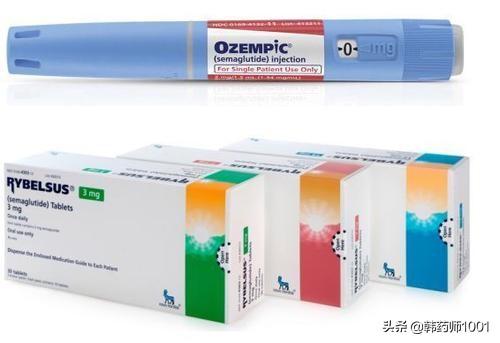
Second, technology!Stem cell therapy technology applied to diabetic patients, has begun a large-scale clinical trials, many of China's major hospitals have begun the relevant research, and the results so far, the effect is also still good! However, the cost is relatively expensive! Therefore, there is still a long way to go before stem cell therapy can be popularized. But at least we see hope and the efforts of medical experts!

Science and technology are changing day by day, and I believe that more and more good drugs and technologies will emerge to solve the world problem of diabetes!

Purely handwritten, I hope my answer was helpful! If you think the writing is okay, please like and follow!
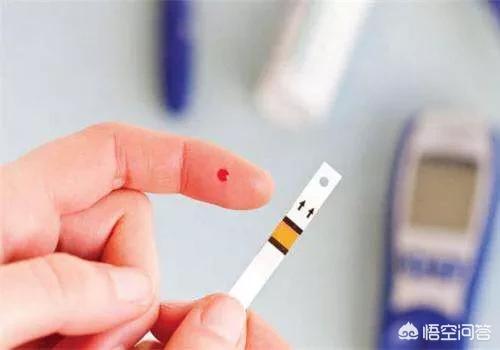
Most type 2 diabetes mellitus is asymptomatic in the early stages, and patients may only discover high blood glucose during an occasional physical examination. Therefore, the diagnosis of diabetes is first based on abnormally elevated blood glucose.
For patients with symptoms of diabetes: such as the appearance of three more and one less (polyuria, polydipsia, polyphagia, and weight loss). The first thing you need to check is fasting blood glucose (FPG).Fasting means no caloric intake for 8 to 10 hours.
FPG 3.9 to 6.0 mmol/L is normal; 6.1 to 6.9 mmol/L is impaired fasting glucose (IFG); ≥7.0 mmol/L should be considered diabetes.
Further glucose tolerance testing (OGTT) should be done for those considering diabetes mellitus
OGTT 2h blood glucose (PG) <7.7 mmol/L is considered normal glucose tolerance; 7.8-11.0 mmol/L is considered reduced glucose tolerance (IGT); ≥11.1 mmol/L should be considered diabetes.
The diagnostic criteria for diabetes are:
Symptoms of diabetes plus plasma glucose ≥11.1 mmol/L at any time, or FPG ≥7.0 mmol/L, or OGTT 2h (blood glucose) PG ≥11.1 mmol/L. Tests need to be repeated once for confirmation for the diagnosis to be established.
In the absence of diabetic symptoms, the diagnosis of diabetes mellitus must be confirmed by reviewing and verifying the blood glucose value on another day. If the results of the review do not meet the diagnostic criteria for diabetes mellitus, the diagnosis should be reviewed periodically. i
Diabetes is a disease characterized by chronicMetabolic disorders characterized by increased blood glucose levelsYesSince insulincaused by defects in secretion and/or action.
Chronic disorders of carbohydrate as well as fat and protein metabolism causeMulti-system damage, resulting in chronic progressive lesions, functional decompensation and failure of tissues and organs such as eyes, kidneys, nerves, heart, blood vessels, etc. Acute severe metabolic disorders, such as diabetic ketoacidosis, hyperglycemic hyperosmolarity, can occur in severe conditions or stress.[Complications]
Diabetes is a common and frequent disease, with a prevalence rate of 10.4% in 2013 in China. It imposes a heavy burden on society and the economy and is a worldwide public health problem that seriously threatens human health.
[Diabetes Types]
1. Type 1 diabetes
2. Type 2 diabetes. Accounts for 90% of diabetics.
3. Special types of diabetes
(1) MODY, mitochondrial gene mutation diabetes mellitus
(2) Goblin Syndrome
(3) Pancreatic exocrine diseases: pancreatitis, pancreatic resection/tumor
(4) Endocrine diseases: Cushing's syndrome, hyperthyroidism, etc.
(5) Drug or chemical-induced diabetes: glucocorticoids, thyroid hormones, and others, among others.
4. Gestational diabetes
[Clinical manifestations]
Basic clinical manifestations: polydipsia, polyuria, polyphagia, weight loss.
Many patients are asymptomatic and are found only on physical examination or other medical visits.
Complications manifested: next time.
This question and answer are from the site users, does not represent the position of the site, such as infringement, please contact the administrator to delete.